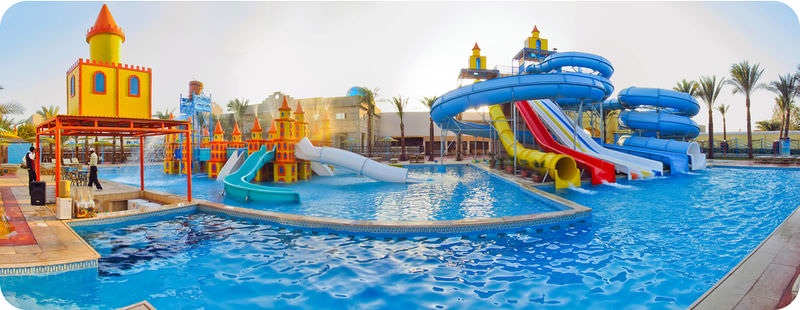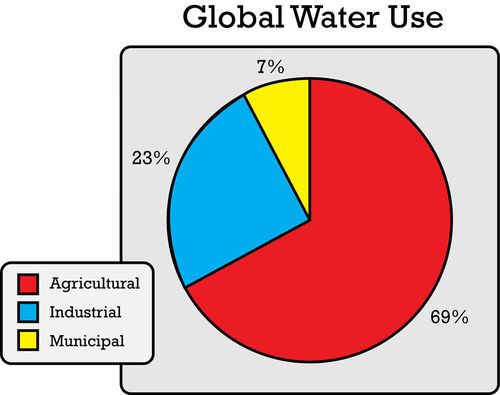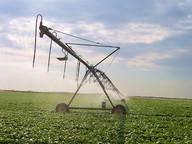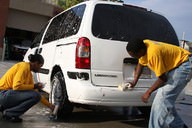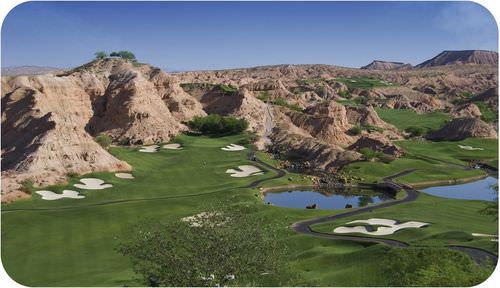8.4: Uses of Water
- Page ID
- 5442
\( \newcommand{\vecs}[1]{\overset { \scriptstyle \rightharpoonup} {\mathbf{#1}} } \)
\( \newcommand{\vecd}[1]{\overset{-\!-\!\rightharpoonup}{\vphantom{a}\smash {#1}}} \)
\( \newcommand{\dsum}{\displaystyle\sum\limits} \)
\( \newcommand{\dint}{\displaystyle\int\limits} \)
\( \newcommand{\dlim}{\displaystyle\lim\limits} \)
\( \newcommand{\id}{\mathrm{id}}\) \( \newcommand{\Span}{\mathrm{span}}\)
( \newcommand{\kernel}{\mathrm{null}\,}\) \( \newcommand{\range}{\mathrm{range}\,}\)
\( \newcommand{\RealPart}{\mathrm{Re}}\) \( \newcommand{\ImaginaryPart}{\mathrm{Im}}\)
\( \newcommand{\Argument}{\mathrm{Arg}}\) \( \newcommand{\norm}[1]{\| #1 \|}\)
\( \newcommand{\inner}[2]{\langle #1, #2 \rangle}\)
\( \newcommand{\Span}{\mathrm{span}}\)
\( \newcommand{\id}{\mathrm{id}}\)
\( \newcommand{\Span}{\mathrm{span}}\)
\( \newcommand{\kernel}{\mathrm{null}\,}\)
\( \newcommand{\range}{\mathrm{range}\,}\)
\( \newcommand{\RealPart}{\mathrm{Re}}\)
\( \newcommand{\ImaginaryPart}{\mathrm{Im}}\)
\( \newcommand{\Argument}{\mathrm{Arg}}\)
\( \newcommand{\norm}[1]{\| #1 \|}\)
\( \newcommand{\inner}[2]{\langle #1, #2 \rangle}\)
\( \newcommand{\Span}{\mathrm{span}}\) \( \newcommand{\AA}{\unicode[.8,0]{x212B}}\)
\( \newcommand{\vectorA}[1]{\vec{#1}} % arrow\)
\( \newcommand{\vectorAt}[1]{\vec{\text{#1}}} % arrow\)
\( \newcommand{\vectorB}[1]{\overset { \scriptstyle \rightharpoonup} {\mathbf{#1}} } \)
\( \newcommand{\vectorC}[1]{\textbf{#1}} \)
\( \newcommand{\vectorD}[1]{\overrightarrow{#1}} \)
\( \newcommand{\vectorDt}[1]{\overrightarrow{\text{#1}}} \)
\( \newcommand{\vectE}[1]{\overset{-\!-\!\rightharpoonup}{\vphantom{a}\smash{\mathbf {#1}}}} \)
\( \newcommand{\vecs}[1]{\overset { \scriptstyle \rightharpoonup} {\mathbf{#1}} } \)
\( \newcommand{\vecd}[1]{\overset{-\!-\!\rightharpoonup}{\vphantom{a}\smash {#1}}} \)
\(\newcommand{\avec}{\mathbf a}\) \(\newcommand{\bvec}{\mathbf b}\) \(\newcommand{\cvec}{\mathbf c}\) \(\newcommand{\dvec}{\mathbf d}\) \(\newcommand{\dtil}{\widetilde{\mathbf d}}\) \(\newcommand{\evec}{\mathbf e}\) \(\newcommand{\fvec}{\mathbf f}\) \(\newcommand{\nvec}{\mathbf n}\) \(\newcommand{\pvec}{\mathbf p}\) \(\newcommand{\qvec}{\mathbf q}\) \(\newcommand{\svec}{\mathbf s}\) \(\newcommand{\tvec}{\mathbf t}\) \(\newcommand{\uvec}{\mathbf u}\) \(\newcommand{\vvec}{\mathbf v}\) \(\newcommand{\wvec}{\mathbf w}\) \(\newcommand{\xvec}{\mathbf x}\) \(\newcommand{\yvec}{\mathbf y}\) \(\newcommand{\zvec}{\mathbf z}\) \(\newcommand{\rvec}{\mathbf r}\) \(\newcommand{\mvec}{\mathbf m}\) \(\newcommand{\zerovec}{\mathbf 0}\) \(\newcommand{\onevec}{\mathbf 1}\) \(\newcommand{\real}{\mathbb R}\) \(\newcommand{\twovec}[2]{\left[\begin{array}{r}#1 \\ #2 \end{array}\right]}\) \(\newcommand{\ctwovec}[2]{\left[\begin{array}{c}#1 \\ #2 \end{array}\right]}\) \(\newcommand{\threevec}[3]{\left[\begin{array}{r}#1 \\ #2 \\ #3 \end{array}\right]}\) \(\newcommand{\cthreevec}[3]{\left[\begin{array}{c}#1 \\ #2 \\ #3 \end{array}\right]}\) \(\newcommand{\fourvec}[4]{\left[\begin{array}{r}#1 \\ #2 \\ #3 \\ #4 \end{array}\right]}\) \(\newcommand{\cfourvec}[4]{\left[\begin{array}{c}#1 \\ #2 \\ #3 \\ #4 \end{array}\right]}\) \(\newcommand{\fivevec}[5]{\left[\begin{array}{r}#1 \\ #2 \\ #3 \\ #4 \\ #5 \\ \end{array}\right]}\) \(\newcommand{\cfivevec}[5]{\left[\begin{array}{c}#1 \\ #2 \\ #3 \\ #4 \\ #5 \\ \end{array}\right]}\) \(\newcommand{\mattwo}[4]{\left[\begin{array}{rr}#1 \amp #2 \\ #3 \amp #4 \\ \end{array}\right]}\) \(\newcommand{\laspan}[1]{\text{Span}\{#1\}}\) \(\newcommand{\bcal}{\cal B}\) \(\newcommand{\ccal}{\cal C}\) \(\newcommand{\scal}{\cal S}\) \(\newcommand{\wcal}{\cal W}\) \(\newcommand{\ecal}{\cal E}\) \(\newcommand{\coords}[2]{\left\{#1\right\}_{#2}}\) \(\newcommand{\gray}[1]{\color{gray}{#1}}\) \(\newcommand{\lgray}[1]{\color{lightgray}{#1}}\) \(\newcommand{\rank}{\operatorname{rank}}\) \(\newcommand{\row}{\text{Row}}\) \(\newcommand{\col}{\text{Col}}\) \(\renewcommand{\row}{\text{Row}}\) \(\newcommand{\nul}{\text{Nul}}\) \(\newcommand{\var}{\text{Var}}\) \(\newcommand{\corr}{\text{corr}}\) \(\newcommand{\len}[1]{\left|#1\right|}\) \(\newcommand{\bbar}{\overline{\bvec}}\) \(\newcommand{\bhat}{\widehat{\bvec}}\) \(\newcommand{\bperp}{\bvec^\perp}\) \(\newcommand{\xhat}{\widehat{\xvec}}\) \(\newcommand{\vhat}{\widehat{\vvec}}\) \(\newcommand{\uhat}{\widehat{\uvec}}\) \(\newcommand{\what}{\widehat{\wvec}}\) \(\newcommand{\Sighat}{\widehat{\Sigma}}\) \(\newcommand{\lt}{<}\) \(\newcommand{\gt}{>}\) \(\newcommand{\amp}{&}\) \(\definecolor{fillinmathshade}{gray}{0.9}\)Dynamic Earth and dynamic human development come together—where?
At a water park! There may be nothing as fun as a water park on a hot day. Fun is one of the uses of water. What are some others?
Water Consumption
Humans use six times as much water today as they did 100 years ago. People living in developed countries use a far greater proportion of the world’s water than people in less developed countries. What do people use all of that water for?
How We Use Water
The image below shows how people use water worldwide (Figure below). The greatest use is for agriculture and then industry. Municipal use is last, but it is also important. Municipal use refers to water used by homes and businesses in communities.
In this global water use chart, see how much is used in agriculture. Why do you think so much water is used in agriculture?
Agriculture
Many crops are grown where there isn’t enough rainfall for plants to thrive. For example, crops are grown in deserts of the American Southwest. How is this possible? The answer is irrigation. Irrigation is any way of providing extra water to plants. Most of the water used in agriculture is used for irrigation. Livestock also need water, but they use much less.
Irrigation can waste a lot of water. The type of irrigation pictured below (Figure below) is the most wasteful. The water is sprayed into the air and then falls to the ground. But much of the water never reaches the crops. Instead, it evaporates in the air or runs off the fields. Irrigation water may cause other problems. The water may dissolve agricultural chemicals, such as pesticides. When the water soaks into the ground, the dissolved chemicals do too. They may enter groundwater or run off into rivers or lakes. Salts in irrigation water can also collect in the soil. The soil may get too salty for plants to grow.
Overhead irrigation systems like this one are widely used to irrigate crops on big farms. What are some drawbacks of irrigation?
Industry
Almost a quarter of the water used worldwide is used in industry. Industries use water for many purposes. Chemical processes need a lot of water. Water is used to generate electricity. An important way that industries use water is to cool machines and power plants.
Household Uses
Think about all the ways people use water at home. Besides drinking it, they use it for cooking, bathing, washing dishes, doing laundry, and flushing toilets. The water used inside homes goes down the drain. From there it usually ends up in a sewer system. At the sewage treatment plant, water is treated and prepared for reuse.
Households may also use water outdoors. If your family has a lawn or garden, you may water them with a hose or sprinkler. You probably use water to wash the car (Figure below). Much of the water used outdoors evaporates or runs off into the gutter. The runoff water may end up in storm sewers that flow into a body of water, such as the ocean.
What will happen to the water that runs off the car? Where will it go?
Fun
Fun wasn't on the pie chart (Figure above), but it's important, too! There are many ways to use water for fun, from white water rafting to snorkeling. When you do these activities, you don’t actually use water. You are doing the activity on or in the water. What do you think is the single biggest use of water for fun? Believe it or not, it’s golf! Keeping golf courses green uses an incredible amount of water. Since many golf courses are in sunny areas, much of the water is irrigation water. Like any similar sprinkler system, much of this water is wasted. It evaporates or runs off the ground.
Sunshine brings golfers to the desert, but a lot of water is needed to make the desert green enough to play.
Environment
It's important to leave some water for the environment. In some places, water is used for wildlife habitat. Man-made lakes create places for fish and water birds. Leaving water in the ecosystems keeps the environment healthy for many species of plants and animals.
Summary
- People use water for agriculture, industry, and consumption.
- Water can also be used for fun and for the environment.
- Some water must remain in the environment to support ecosystems.
Review
- Why do people use so much more water than they used to?
- How is water used for agriculture? How can it be used better?
- Why is it important to have water for fun and for the environment?


